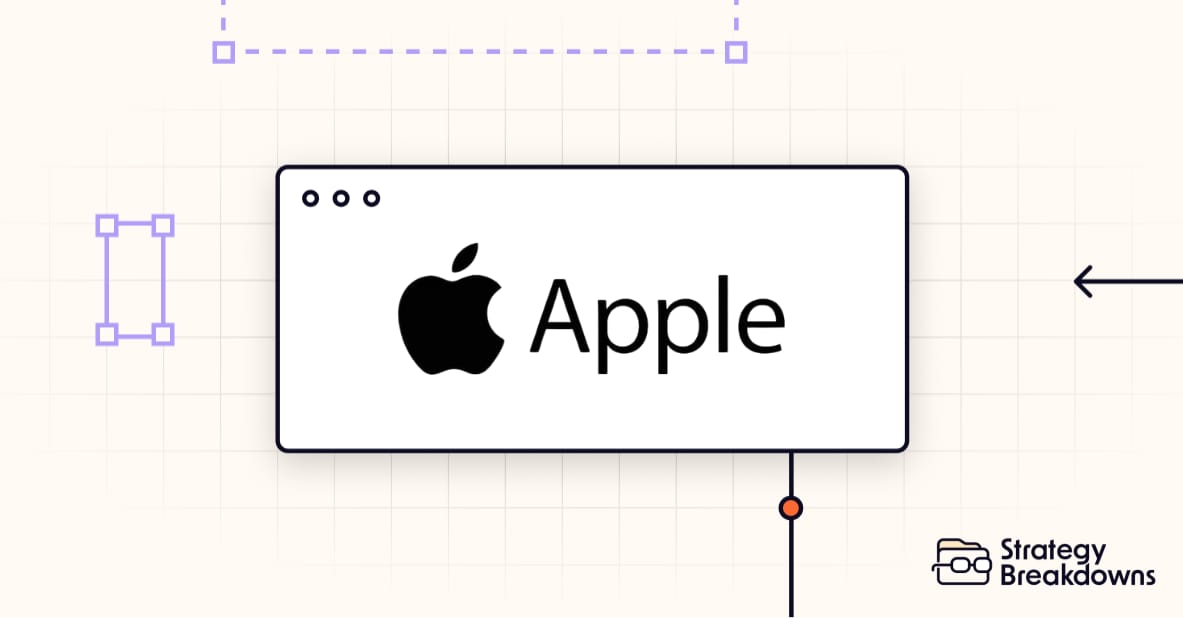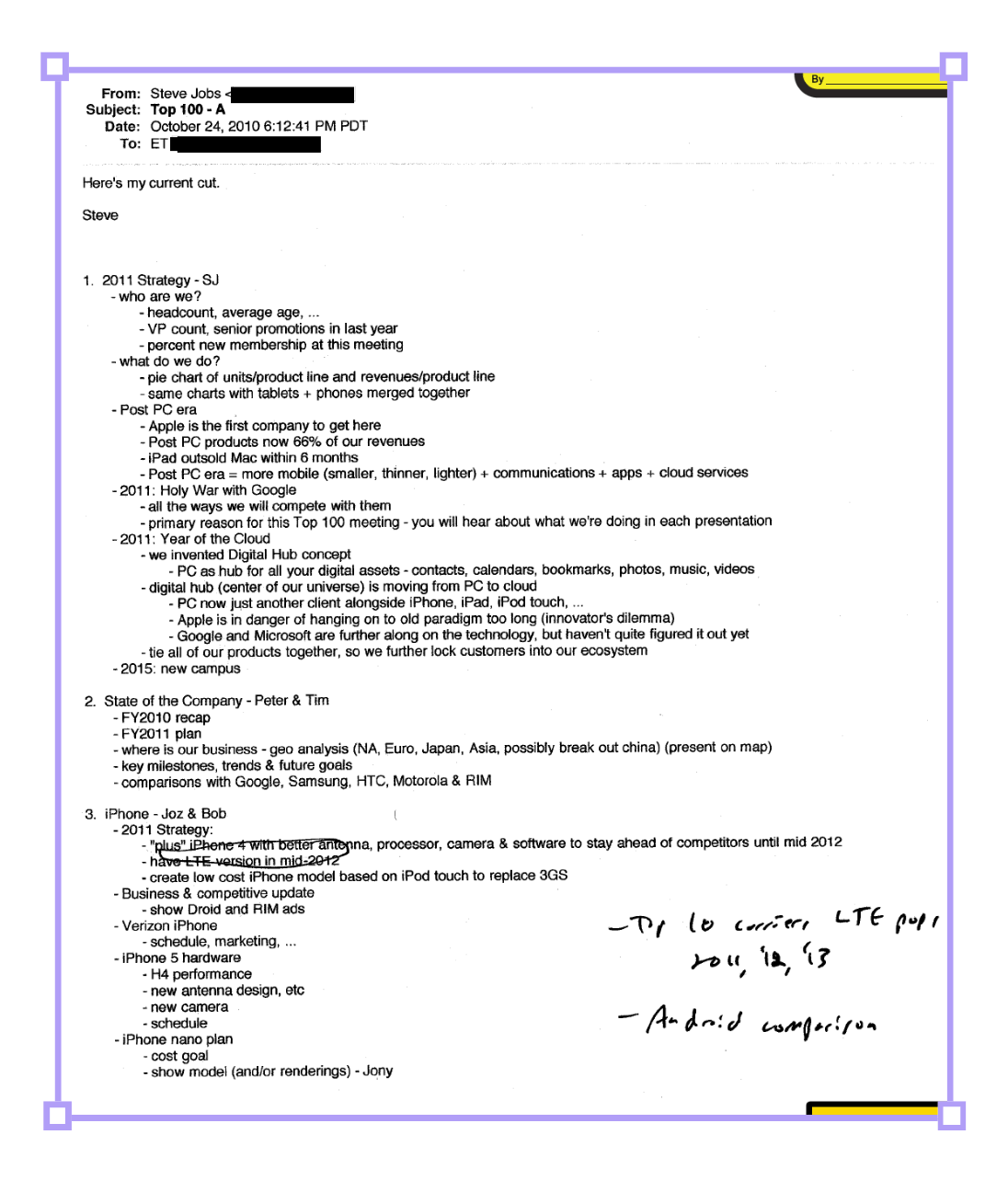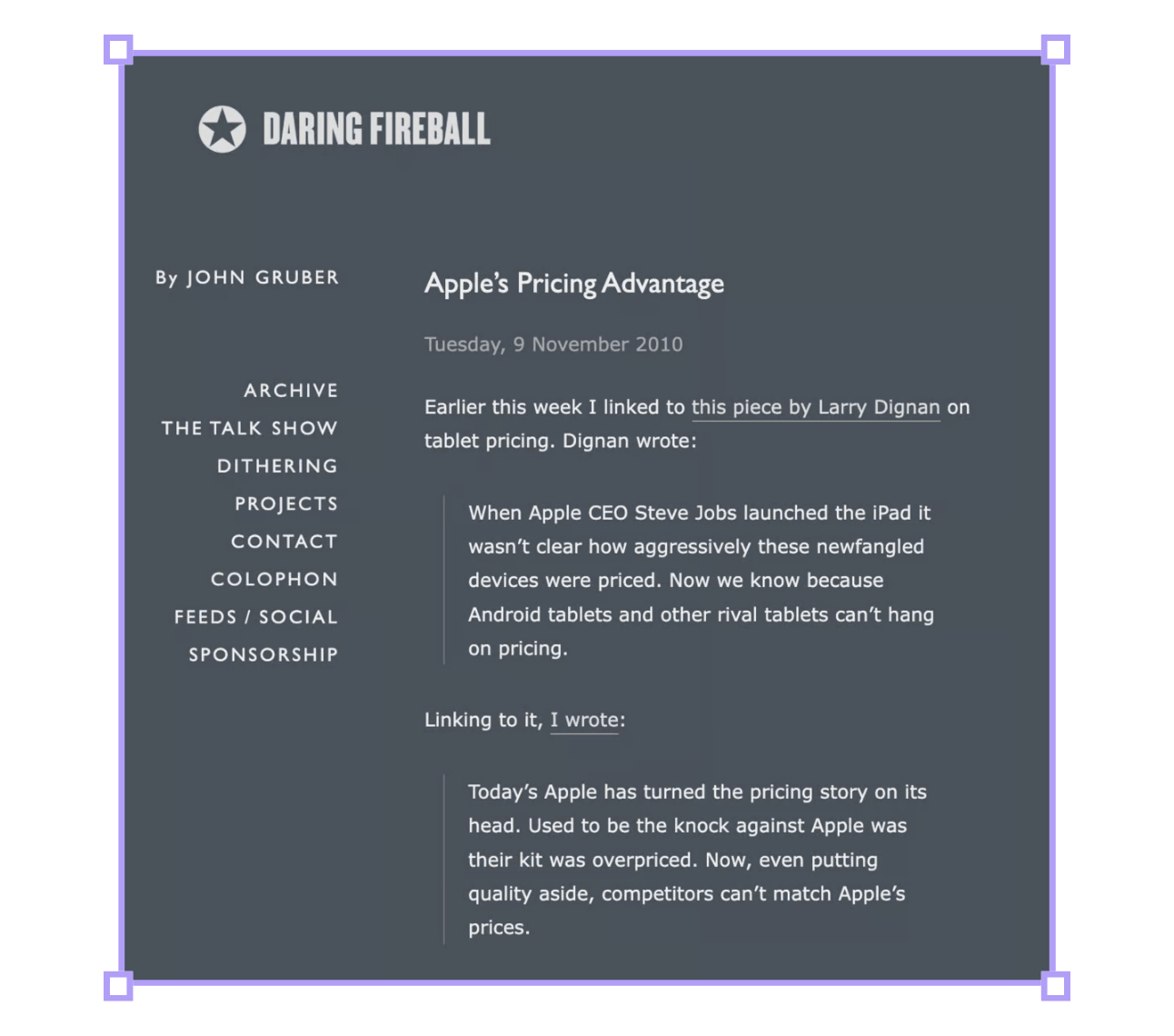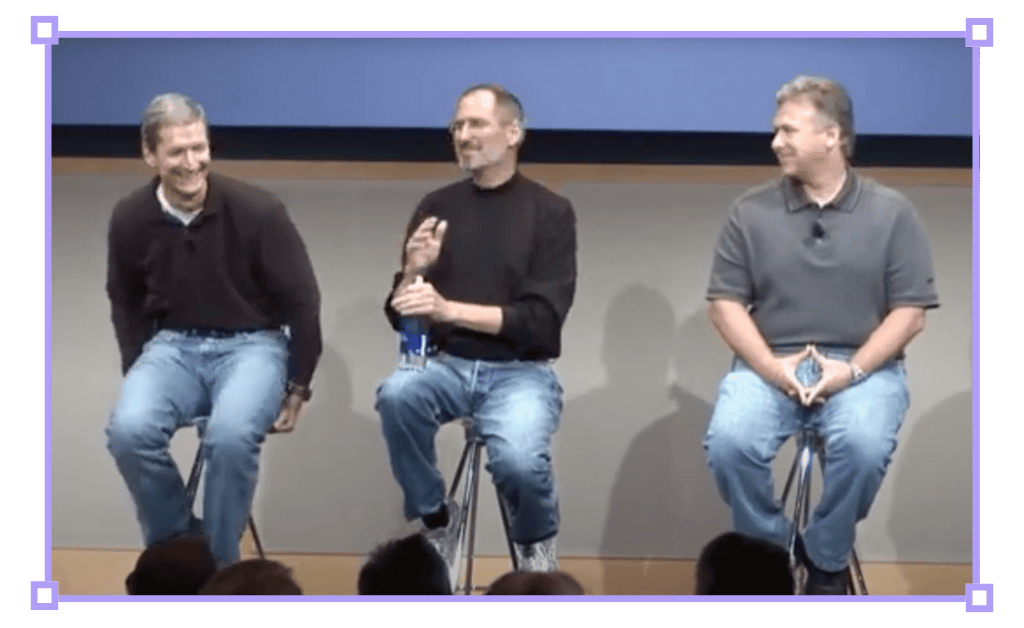Read time: 3 minutes 5 seconds

Ever wondered why whenever you buy MacBook, iPhone, iPad etc, you always end up spending more than intended?
You're not alone.
Apple has mastered the art of making their upsells seem irresistible through a carefully architected pricing strategy.
I recently picked up an iPad* and couldn’t help but notice a handful of neat tactics they leverage throughout the purchase journey to make you spend more.
Here’s how they work, and how to utilise them yourself.
Enjoy.
— Tom
* … ok maybe it was an iPad Pro



Chess Move
The what: A TLDR explanation of the strategy
You open the Apple website, looking to buy an iPad.
You’re presented with 5x options:
$329 (iPad 9th Gen): The most affordable iPad.
$449 (iPad 10th Gen): The newer iPad with a better display, chip, camera, and USB-C.
$499 (iPad Mini): The compact iPad that fits in one hand.
$599 (iPad Air): The thinner and lighter iPad with a laptop-grade chip.
$799 (iPad Pro): The best iPad money can buy.

Like most prospective customers, your needs would be met with the cheapest iPad on offer…
but you end up spending an additional 82% (+$270) on the iPad Air.
Why is that?
The answer begins with the “Center-Stage Effect”:
When customers are presented with a range of choices, they perceive the middle options to be the best value-for-money.
Most buyers don’t consider themselves a power-user needing a ‘Pro’ device.
But there’s also natural aversion to buying a ‘previous-gen’ device.

💡
Strategy Playbook: Assemble pricing ladders that leverage cognitive biases to draw customers towards premium products.


Breakdown
The how: The strategic playbook boiled down to 3x key takeaways
1. Incremental upgrades
Due to the “Center-Stage Effect”, you’re likely to initiate your purchase flow with the 10th Gen iPad.
After choosing a colour, you’re asked to “Choose how much space you’ll need”: 64GB or 256GB.
For 4x the storage, it’s just an extra $150.
One scroll later, you must “Choose how you’ll stay connected”: Wi-Fi only, or Wi-Fi + Cellular.
Again, another $150.
Each upsell is introduced one-by-one, taking up the entire viewport, rather than all at once to gauge them holistically.
As you assess each incremental upsell, "Commitment Bias" stops you from reverting decisions you previously committed to.
Whether you picked extra storage or cellular connectivity, it won’t take long to realise that the extra $150 you’ve mentally parted ways with could instead cover upgrading to the iPad Air.
When evaluated against the equally-priced storage or cellular add-ons, getting the Air feels like a no-brainer.

2. Win the persuadable cohort
There are 3 cohorts of iPad buyers:
People who want the cheapest iPad.
People who want the best iPad on the market.
People who want the iPad with the best value-for-money.
For Category 1 buyers, no amount of extra functionality will justify spending any more than necessary for core features like checking emails and watching Netflix.
Category 2 buyers go straight for the iPad Pro, along with all the bells and whistles, knowing they’re getting the best tablet money can buy.
Category 3 buyers are the “swing voters” - they may have an initial preference for cheaper cost or higher performance, but ultimately they make decisions based on a value assessment of options presented to them.
Apple’s pricing ladders primarily maximise the Average Cart Value (”ACV”) of Category 3 buyers.
3. Drive value across the ecosystem
60% of Apple customers own 3 or all 4 of the main Apple devices iPhone, iPad, Apple Watch, and Mac (CIRP, 2023).
Apple uses variations of the same strategies to incentivise upgrades across each device range:
Prior Gen → Current Gen
Faster performance
Additional storage
More connectivity
“Mini” / “Max”
“Air” / “Pro”
And then there’s peripherals.
Plan to draw, write, create? Get the Apple Pencil.
Spend a lot of time typing? Get the Magic Keyboard Folio.
Tie it all together with some AirPods that seamlessly work across all devices…
or maybe AirPod Pros…
or even AirPods Max!
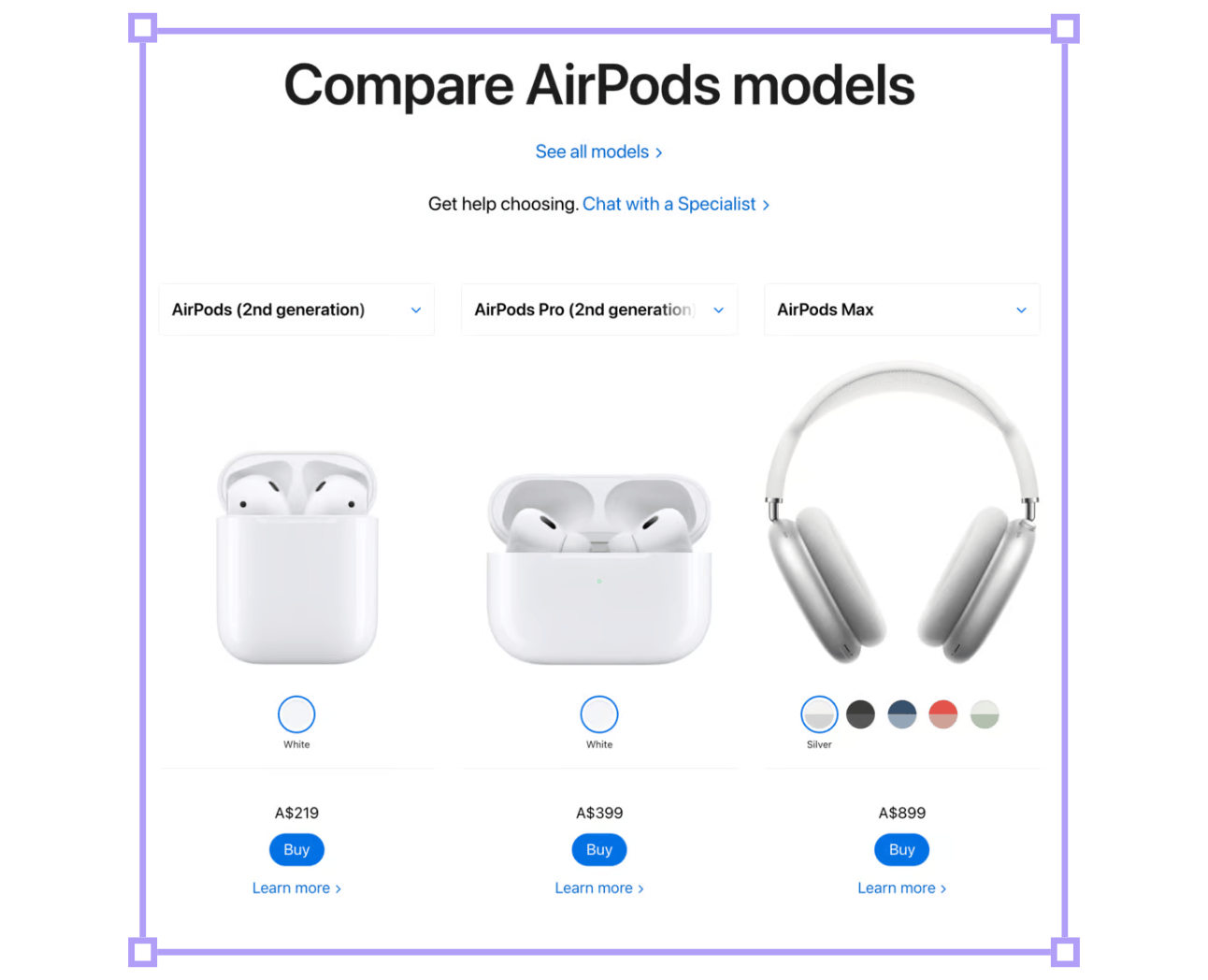


Rabbit Hole
The where: 3x high-signal resources to learn more
[2 minute read]
Agenda for the legendary “Top 100” strategy session - a 3-day workshop with 100 of Jobs’s most loyal supporters across Apple’s leadership team.
A few highlights:
“Tie all our products together, so we further lock customers into our ecosystem”
“We’re in a Holy War with Google”
“Plan for the iPhone Nano”
[2 minute read]
Apple faces fierce competition against iPhones, MacBooks, and iMacs.
Customers have plenty of viable cheaper alternatives to Apple’s premium offerings.
So, how come no company has successfully competed in iPad, iPod, or iPod Touch device categories?
The answer might surprise you.
[3 minute watch]
Back in 2007, many doubted if Apple’s personal computers met a real market need.
They were high-priced and elegant, but didn’t serve the performance-centric gaming segment.
This is what Steve Jobs had to say when asked about whether targeting a “smaller elite rather than mass market” would lead Apple to overtake PCs in market share.
That’s all for today’s issue, folks!
I’ll leave you with one question to ponder:
→ What behavioural economics principles might you leverage to increase the average value of a customer?
Thanks for being here.
— Tom


Whenever you're ready, there are 3 ways we can help you:
Our flagship course on how to use free internet data to make better strategic decisions. Contains 5 years of strategy expertise, proven methods, and actionable tactics to accelerate your career with modern-day strategy skills.
We have a growing audience of 55,000+ strategists from top companies like Google, Meta, Atlassian, Stripe, and Netflix. Apply to feature your business in front of Strategy Breakdowns readers.
One of the most common questions we get asked is: “What tools do you use to run Strategy Breakdowns?” So, we’ve open-sourced our tech stack to give you an inside-look at exactly what tools we’re using to power each corner of this operation.

